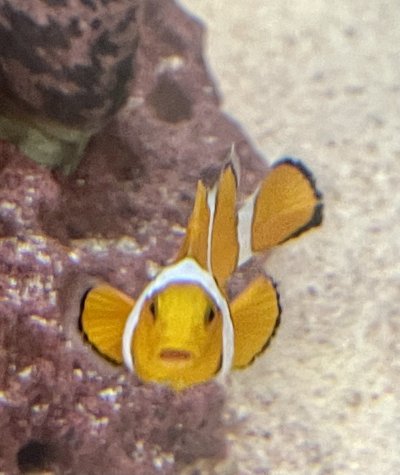My clown fish are about 11 yrs old. My male clown recently got very thin and has been laying around the bottom. He perks up when I look at him and when I feed them, he’s eating fine but then goes back to the bottom.
I assume internal parasite? How do I treat this?
Can he be separated from the female? I have a QT I can use but I’m also worried they can’t be apart.
The female is fine and the other fish, a kole tang, is also fine, I don’t have corals.
I assume internal parasite? How do I treat this?
Can he be separated from the female? I have a QT I can use but I’m also worried they can’t be apart.
The female is fine and the other fish, a kole tang, is also fine, I don’t have corals.




















